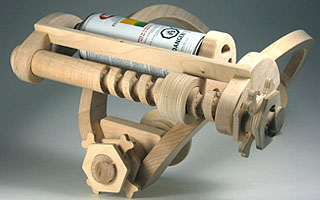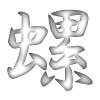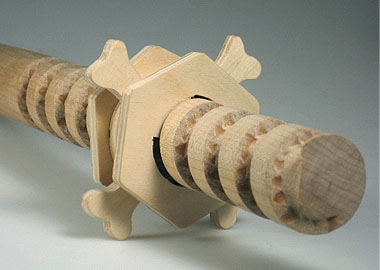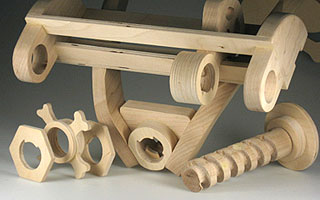Understanding the Screw
I made a test model screw out of rigid foam. As the principle of the screw is an inclined plane wrapped around a cylinder, I cut a piece of paper into a long right triangle, wrapped it around cylindrical foam, drew lines following the hypotenuse, and carved between lines.
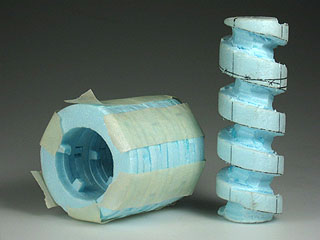
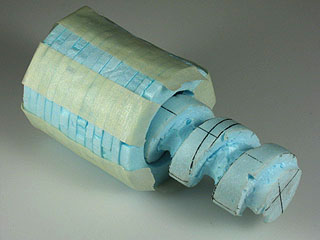
The internal thread is composed of rings with a claw inside, and they are layered so that the claws are lined up on a spiral line and fit the groove on the external thread. The foam screw worked as expected.
The Three Principles of the Screw and The Toxic Boy
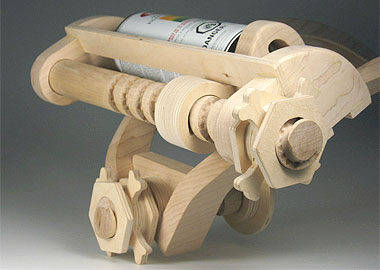
Altering the Motion
The first principle of the screw is to transform rotary motion into linear motion. This principle is utilized by the aerosol can holder; tightening or loosing the handle on left side modulates the gas spray and allows for a variety can sizes.
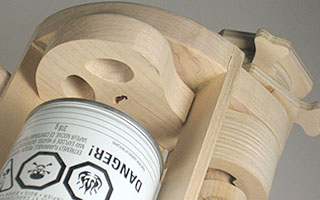
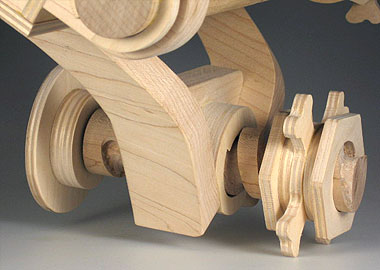
Transforming Force and Motion
The second principle is to transform a small force with a large movement into a big force with a small movement. This principle is utilized by the clamp. The clamp, tightened against Toxic Boy's round belly, holds the entire MP-730 rig firmly in place. Since he is Toxic Boy, clamping his abdomen does not hurt him!?
